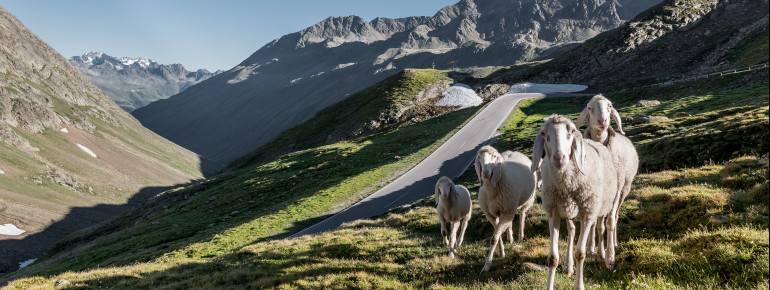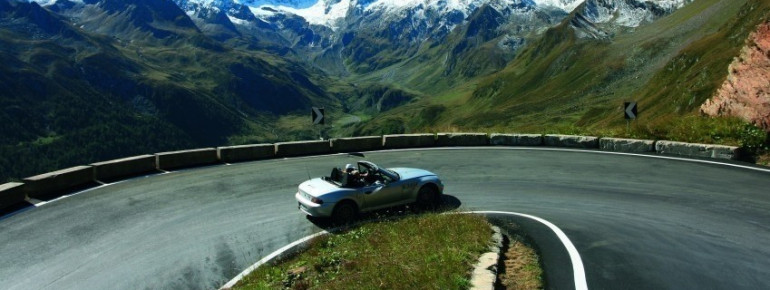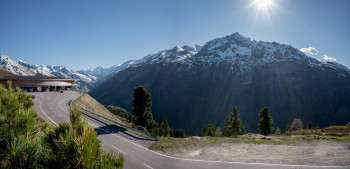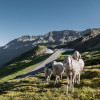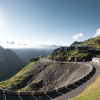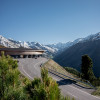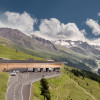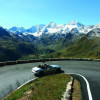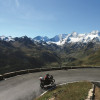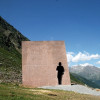Contents
Description
Before the High Alpine Road between the Passeier and Ötztal valleys was extended, there was only a narrow mule track here. But soon the great potential of the track was discovered at the Timmelsjoch, so that it was renewed and today it is easily navigable in both directions.
The High Alpine Road contains approx. 30 hairpin bends and is almost 35 kilometres long, the highest point is 2509 metres. The maximum gradient is 13 percent. At several stops between the two valleys, architectural sculptures inform travellers about the nature, history, culture, society and economy of the region and contribute to their education.
Toll station with the highest motorcycle museum in the world
Your journey begins on the Ötztal side with passing the Top Mountain Crosspoint. The building is not only a toll station, but also houses the highest motorcycle museum in the world. The Kirchenkarbahn also starts there, bringing many skiers to the popular Hochgurgl ski area in winter.
Bridge with panoramic view
The first stop on your architectural journey is directly behind the toll station. Here, the so-called footbridge extends over the deep gorge of the rear Ötztal valley and offers a view of the mountain peaks, some of which rise up to 3000 metres above sea level. The footbridge reaches from the building very far over the abyss. So not only do you have a beautiful view, but you can also take a look into the depths. When you have had enough of the beautiful mountain landscape, you can go inside the building and let the information prepared for you have an effect on you. You will learn a lot about the natural monument of the Obergurgler Zirbenwald and the nearby glacier formations. Also historically nothing comes too briefly, because also the first settlements of the environment are explained to you here descriptively.
On the way with the smugglers
Now it goes on for you over the beautiful high alpine road, until you reach the next station at the Timmelsbachbrücke and here you have the unique opportunity to go on tour with smugglers. This is where the original path from Zwieselstein to Moos once ran, so that you will also find a historical path in the area. The structure erected here has the shape of a cube, to which you have entered through the silhouette of an oversized smuggler. Inside you will learn about the history of this guild and learn about the smuggling tradition and its circumstances. Besides, you will get to know the Ötztal Kraxbearer.
Worth knowing in the Passmuseum
After a few more kilometres you will cross the border between Tyrol and South Tyrol, where you will also find the next opportunity for a stopover, as this is the so-called Pass Museum on the Timmelsjoch. Not climatically, but visually you will experience a true ice cave, because the small museum tells the story of the pioneers of the High Alpine Road. With a lot of courage and skill they paved the way, which until today has developed into a wide road and thus laid the foundation for the Timmelsjoch experience. In addition, you can get to the bottom of the name of the Timmelsjoch a little more precisely and also learn something about the pre-Christian times of the region.
Looking far out with the telescope
If you are particularly interested in beautiful landscape photos during your trip over the Timmelsjoch, the next stopover is recommended. Below the disc head there is a large telescope with which you have a focused view of the unique mountain panorama. Here you have a direct view of the nature park around the Texel Group and can see the Granatkogel and the high ridge at 3403 m altitude. In keeping with this good view of the rock giants, this building also provides you with more information about the geology of the Passeier Valley and its various rocks.
The garnet in moss
Towards the end of the Timmelsjoch experience you finally reach the area around Moos. In Stuls you also have the last chance to stop and admire the final architectural work. On a rocky slope two large grenades were built, which are always easy to see at night, because they glow red and are therefore always visible from a distance. Nevertheless, the two formations are so well placed that they still serve as a good vantage point and present the valley from its best side at the end. At this point there is also another information station, which tells you more about the waterfalls of South Tyrol and the so-called hay shooting.
How to get there
Since the Timmelsjoch High Alpine Road stretches from Moos to Hochgurgl, you can also start from both sides.
By car
If you start the Timmelsjoch experience from Moos, it is best to drive to St. Leonhard first and turn left here onto the SS44bis side road, which automatically takes you to the small village. St. Leonhard can be easily reached via the SS44 main road, which will take you from both Sterzing and Merano to your destination. If you start your journey from Hochgurgl, you can reach it via the B186, which takes you to your destination via Sölden.
By public transport
Moos is easy to reach with the local bus connections. From the bus station in St. Leonhard, the bus in the direction of Rabenstein also stops at regular intervals in Moos. Since Hochgurgl is part of the ski area in the Ötztal valley, ski buses run several times a day to Hochgurgl.

